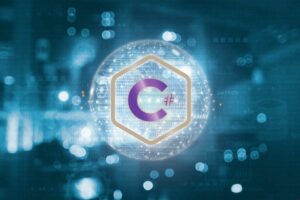VFRC is a hypervisor-based software-defined flash storage tier solution. It aggregates local flash devices to provide a clustered flash resource for consumption by both virtual machines and ESXi hosts. ESXi hosts can consume the flash via Virtual Flash Host Swap Cache . VMware announced the release of vSphere 5.5 during the First day of VMworld in San Francisco and the general availability has not yet been disclosed.

Auto Remove of Devices on PDL – This feature automatically removes a device from a host when it enters a Permanent Device Loss state. Each vSphere host is limited to 255 disk devices, removing devices that are in a PDL state prevents failed devices from occupying a device slot. Below are direct links to VMware’s configuration maximums in PDF format for download or print. When you configure, deploy, and operate your virtual and physical equipment, you must stay at or below the maximums supported by your product. The limits presented in the Configuration Maximums tool are tested limits supported by VMware.
vSphere 5.5 – Download Free ESXi 5.5 License Keys
All our documentation comes in PDF format, which you can access by selecting the Download PDF icon on any page in the HTML documentation. PDFs for previous releases of vSphere are available for download in a ZIP archive format. The archive can be found under the Archive Packages heading for each major version in the table of contents on the left. To learn about vSphere and data center virtualization, see the following resources. An online reference that shows what hardware, converged systems, operating systems, third-party applications, and VMware products are compatible with a specific version of a VMware software product. VSphere supports several storage technologies for both traditional and software-defined storage environments.
- For example, version 8.0 contains all the updates for 8.0.x releases.
- VSphere HA Compatibility with DRS Anti-Affinity Rules –vSphere HA will now honor DRS anti-affinity rules when restarting virtual machines.
- I also looked a the “Configuration Maximums” doc, and it also does not call out the difference maximums by edition.
- The limits presented in the Configuration Maximums tool are tested limits supported by VMware.
There is no longer an external database required for the SSO server, which together with the vastly improved installation experience helps to simplify the deployment of SSO for both new installations as well as upgrades from earlier versions. This latest release of SSO provides enhanced active directory integration to include support for multiple forest as well as one-way and two-way trusts. In addition, a new multi-master architecture provides built in availability that helps not only improve resiliency for the authentication service, but also helps to simplify the overall SSO architecture. On August 26th at VMworld 2013 VMware announced vSphere 5.5, the latest release of VMware’s industry-leading virtualization platform. This latest release includes a lot of improvements and many new features and capabilities. In an effort to try and get my head around all this exciting new “stuff” I decided to go through the what’s new paper and compile a brief summary .
VMware vSphere Configuration Maximums
VSphere 5.5 introduced with lot of enhancements as compared with the previous versions. In everyone’s mind first thought about new release is configuration maximum. How big the platform supports.Below are the New configuration maximum of vSphere 5.5 which is increased 2 times as compared with vSphere 5.1. VSphere Web Client – the web client in vSphere 5.5 also comes with several notable enhancements. The web client is now supported on Mac OS X, to include the ability to access virtual machine consoles, attach client devices and deploy OVF templates.
Content published here does not reflect the views and opinions of VMware. You can create custom documentation collections, containing only the content that meets your specific information needs, using MyLibrary. Learn about the solutions vSphere provides to help you overcome your IT challenges, and create a more efficient digital infrastructure by visiting Cloud Platform Tech Zone and vSphere White Papers and Technical Notes.

Microsoft Cluster Server Updates – MSCS clusters running on vSphere 5.5 now support Microsoft Windows 2012, round-robin path policy for shared storage, and iSCSI and Fibre Channel over Ethernet for shared storage. Support for 62TB VMDK – vSphere 5.5 increases the maximum size of a virtual machine disk file to 62TB . The maximum size for a Raw Device Mapping has also been increased to 62TB. The following listings are a comprehensive collection of configuration maximums from VMware products. The vSphere documents in HTML reflect the latest vSphere update release of each major vSphere version. For example, version 8.0 contains all the updates for 8.0.x releases.
This means that virtual machines at the production site may now be Storage vMotion’ed, and conversely, participate in Storage DRS datastore clusters without impacting vSphere Replication’s RPO . This new controller is of particular benefit when virtualizing Mac OS X as it allows you to present a SCSI based CD-ROM device to the guest. Yes, we finally have VMDKs that can grow to a size larger than the 2TB – 512 bytes.
This is great to see, and something I know a lot of you have been waiting for. Well, 64TB is still the maximum size of the VMFS-5 datastore, so if you filled the VMFS datastore with a single VMDK, there would be no space left for certain management tasks, like taking a snapshot, etc. This was problematic in the past when we had 2TB VMFS extents and 2TB VMDKs. VM Latency Sensitivity – included with the new virtual machine compatibility level comes a new “Latency Sensitivity” setting that can be tuned to help reduce virtual machine latency. When the Latency sensitivity is set to high the hypervisor will try to reduce latency in the virtual machine by reserving memory, dedicating CPU cores and disabling network features that are prone to high latency. VCenter Single Sign-On – in vSphere 5.5 SSO comes with many improvements.
Explore vSphere without having to install it using the VMware vSphere Hands-on Labs environment. The report provides information about problems that might prevent the completion of a software upgrade, and actions you can take to remedy those problems. The KB states that it applies to vSphere 5.0, 5.1, and 5.5 (though the title only states 5.5). I just validated that a fully patched 5.1 host with a Standard Edtion license still has an 8 vCPU limit. I looked at a number of web pages comparing VMware editions, but this difference regarding max number of vCPUs is not listed.
Introducing VMware vSphere+ Standard edition
I’m not going to delve back into the history of All Paths Down or Permanent Device Loss . This has a long and checkered history, and has been extensively documented. Suffice to say that this situation occurs on device failures or if the device is incorrectly removed from host. PDL is based on SCSI Sense Codes returned from the array and a PDL state means that the ESXi host no longer sends I/O to these devices. VSphere Big Data Extensions – Big Data Extensions is a new addition to the VMware vSphere Enterprise and Enterprise Plus editions. BDE is a vSphere plug-in that enables administrators to deploy and manage Hadoop clusters on vSphere using the vSphere web client.
In 5.1, we supported these HBAs running at 16Gb but there was no support for full end-to-end 16Gb connectivity from host to array. The host to switch could run at 16Gb, but the switch to array had to run at 8Gb. With the release of vSphere 5.5, VMware now supports 16Gb E2E (end-to-end) Fibre Channel 7 Advantages of Node js for startups connectivity. For more information about these new features as well as more information about VDP vs. VDP advanced check out Jeff Hunter’s recent blog post. VSphere HA Compatibility with DRS Anti-Affinity Rules –vSphere HA will now honor DRS anti-affinity rules when restarting virtual machines.
Announcing the Initial Availability of VMware Cloud Consumption Interface
Lastly, with the introduction of 62TB VMDKs, unmap can now handle much larger dead space areas. Virtual Machine are allocated a part of the flash resource via the web client. VFRC is a write-thru caching mechanism in this initial release, which means that https://topbitcoinnews.org/ the writes go directly to persistent storage as well as into cache, which means that the block is available for subsequent reads to be accelerated. While it is not yet GA, it is almost there and vSphere 5.5 will enable you to try it out first hand.
First off, VMware now supports FCoE and iSCSI protocols for shared disk access. We have also introduced support for the round robin path policy on the shared disks. And finally, support for Microsoft Windows 2012 support has also been introduced. Learn how to use vSphere with Tanzu to transform vSphere into a platform for running Kubernetes workloads natively on the hypervisor layer. With this functionality, you can enable a vSphere cluster to run Kubernetes workloads by configuring it then as a Supervisor. DevOps engineers and application developers can then run containerized applications on vSphere Namespaces by deploying vSphere Pod, VMs, and upstream Kubernetes clusters through Tanzu Kubernetes Grid with vSphere.
Read the latest products announcements, technical articles, and operations guidance from VMware on the vSphere Blog. PDL AutoRemove in vSphere 5.5 automatically removes a device with PDL from the host. A PDL state on a device implies that the device is gone and that it cannot accept more IOs, but needlessly uses up one of the 256 device per host limit. PDL AutoRemove gets rid of the device from the ESXi host perspective. Maximums of appliance and Windows server are the same as long as they use an external database. But appliance can only use Oracle as an external database while Windows server can use SQL too.





